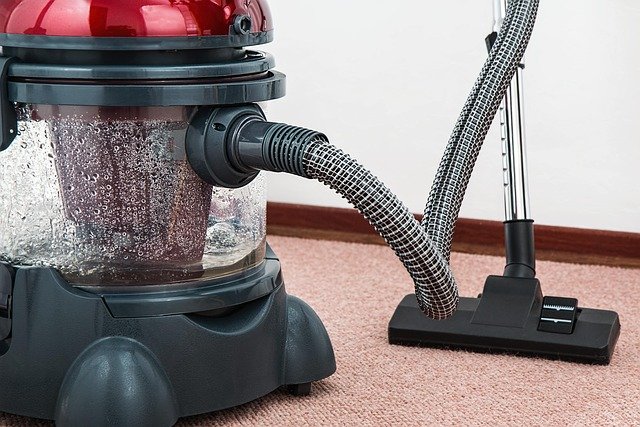Air Purifier: How HEPA & Carbon Filters Improve Indoor Air Quality
An air purifier can be a practical tool for reducing airborne pollutants in homes and workplaces, especially where ventilation is limited or allergy triggers are present. This article explains how an air purifier works, the role of a hepa filter and carbon filter, and how different filtration approaches affect indoor air quality. This article is for informational purposes only and should not be considered medical advice. Please consult a qualified healthcare professional for personalized guidance and treatment.

What is an air purifier and how does it work?
An air purifier is a device designed to remove contaminants from the air in a defined space. Most units draw room air through a series of filters and circulate cleaned air back into the room. Basic designs include a pre-filter to catch large particles, a primary particle filter such as a hepa filter for fine particulates, and sometimes a carbon filter or other media for gases and odors. Fans and motors move the air; higher-quality models balance airflow, noise levels, and energy efficiency. Placement in the room and matching the purifier’s capacity to room size are important for effective performance.
How does a hepa filter remove particles?
A hepa filter captures tiny particles through a combination of interception, impaction, and diffusion. True HEPA (High Efficiency Particulate Air) filters are rated to remove at least 99.97% of particles 0.3 microns in diameter, which covers many allergens like pollen, dust mite debris, and some fine smoke particles. HEPA works mechanically rather than chemically, trapping particulates in dense fibrous layers. Regular replacement or maintenance is required because a clogged hepa filter reduces airflow and performance. Look for filters certified to meet HEPA standards and note that some manufacturers market “HEPA-like” or “HEPA-style” filters that may not meet the same efficiency.
When is a carbon filter useful?
A carbon filter (activated carbon) is useful when gases, odors, or volatile organic compounds (VOCs) are a concern. Activated carbon adsorbs molecules such as cooking smells, pet odors, chemical fumes from paints or cleaners, and some components of wildfire smoke that are gaseous. Carbon filters are not effective at removing solid particulates by themselves, so they are often used alongside a hepa filter in combined systems. The lifespan of carbon media depends on exposure levels and how many pollutants it absorbs; once saturated, it can no longer capture additional gases and needs replacement.
How do air purifiers affect indoor air quality?
Air purifiers can significantly improve indoor air quality by reducing airborne particle counts and, when equipped with carbon or specialty filters, lowering levels of gases and odors. For people with allergies, asthma triggers, or those living in areas prone to smoke or high outdoor pollution, a properly sized purifier can lower symptom triggers and make the indoor environment more comfortable. However, air purifiers are only one part of a broader indoor air quality strategy: source control (reducing pollutant generation), adequate ventilation, humidity control, and regular cleaning all matter. Devices that produce ozone or other byproducts should be avoided because these can worsen air quality.
What types of filtration and technologies are available?
Filtration options include mechanical filters (hepa and pre-filters), adsorbent media (carbon), and various supplemental technologies. Mechanical filtration captures particles; adsorption targets gases; UV-C light aims to inactivate microorganisms, though effectiveness varies with design and exposure time; and electrostatic precipitators collect charged particles but can produce small amounts of ozone. Multi-stage systems combine methods to address a broader range of contaminants. When comparing technologies, prioritize independent test data, certified hepa performance for particulates, and verified ozone emissions below regulatory limits. Consider noise level, clean air delivery rate (CADR), energy use, and filter replacement costs when selecting a model.
Maintenance, placement, and realistic expectations
To maintain performance, follow manufacturer guidance for filter changes, typically every 6–12 months for hepa filters depending on usage and environment; carbon filters may need more frequent replacement if exposed to heavy odors or chemicals. Place an air purifier centrally or in the room where you spend the most time, avoiding obstructions near intake or outflow. Understand that most portable air purifiers are designed to clean air in a single room; whole-home systems integrated into HVAC ducts require different sizing and professional installation. While air purifiers reduce airborne contaminants, they do not remove settled dust on surfaces or address structural sources of pollution like mold-infiltrated materials without remediation.
Conclusion
Air purifiers, when matched to room size and equipped with proven hepa filter media and appropriate carbon filtration for gases, can be an effective component of improving indoor air quality. Choose devices based on verified filtration performance, maintenance needs, and the specific pollutants you want to target. Pair them with good ventilation, source control, and a regular cleaning routine for the best overall indoor air results.






